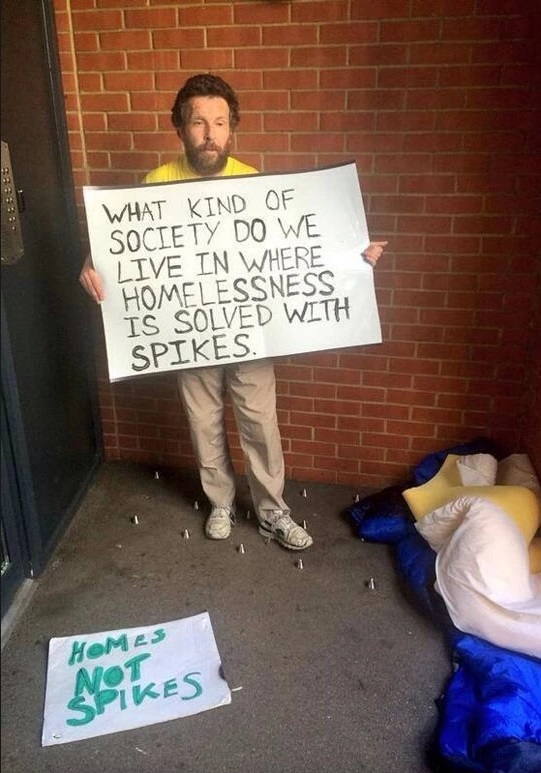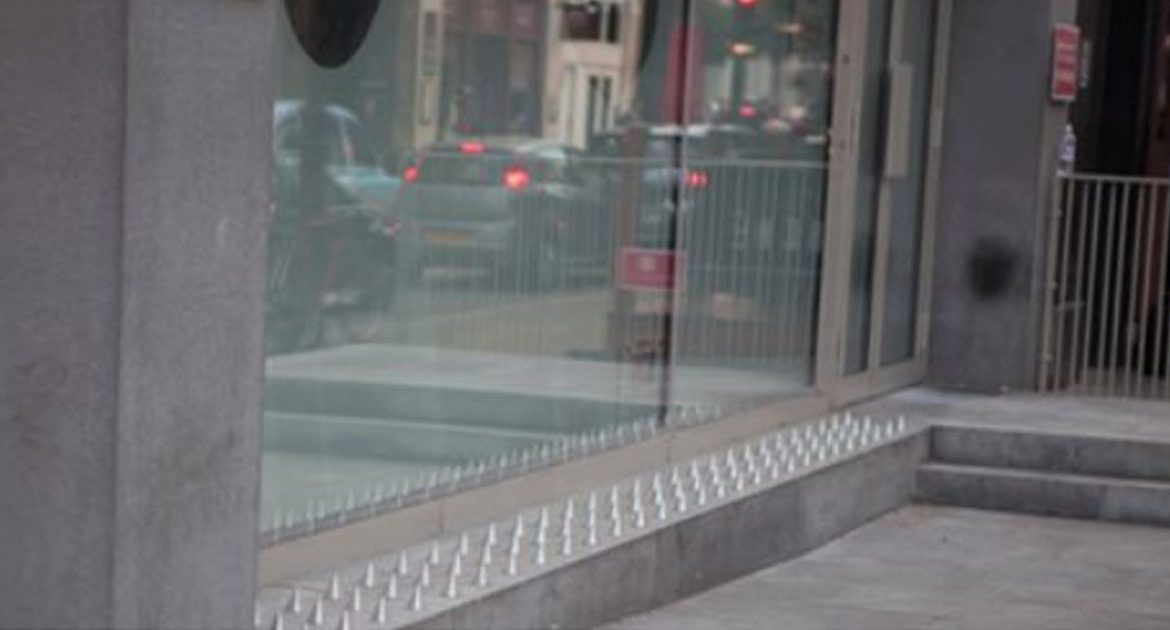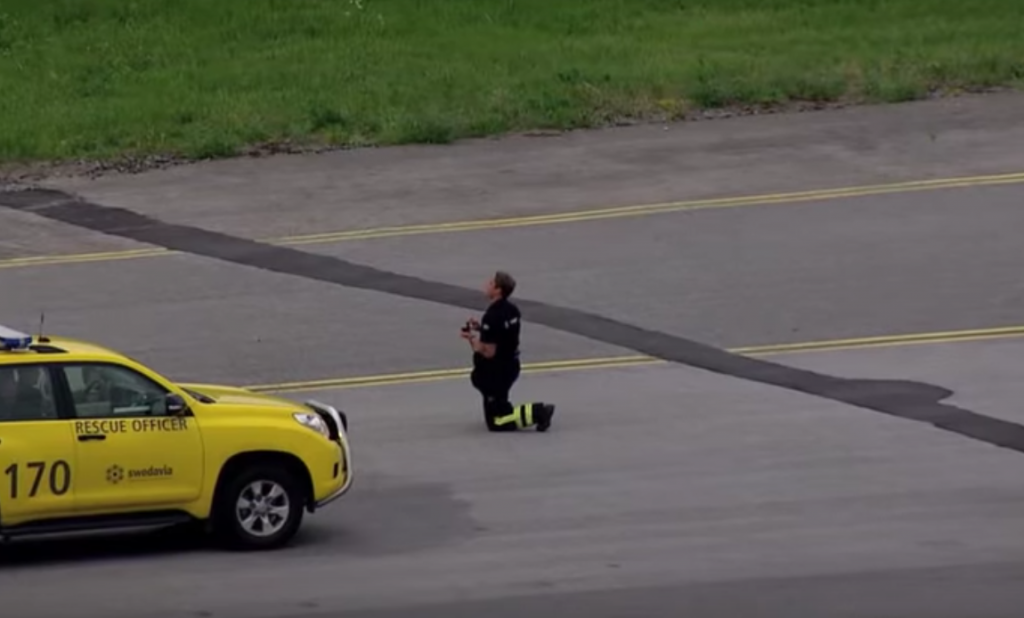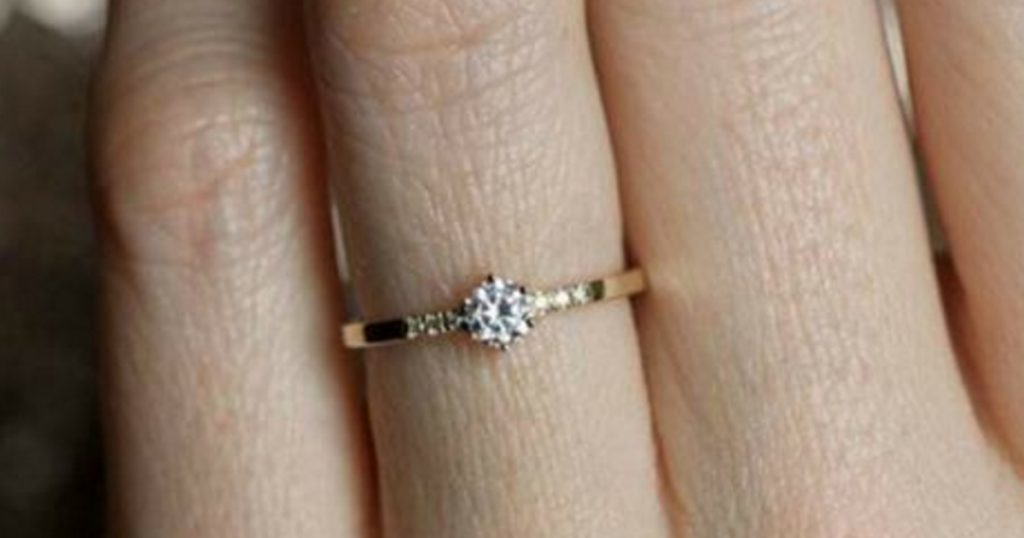If you haven’t heard of or seen anti-homeless spikes, they are designed to prevent homeless people from sitting or sleeping on concrete steps. They are a prime example of how urban planning creates spaces and tools to deter homeless people instead of creating spaces to assist and uplift them.
Of course, not all concrete steps in all cities have spikes on them. However, cities like Montreal and Tokyo have implemented these anti-homeless spikes in certain areas so that people can’t rest for long. The issue is that these spikes do nothing to fight homelessness. They are another tool to make homeless people invisible. They disguise the problem rather than solve it.
Leah Borromeo is a member of an art collective called “Space, Not Spikes” who are fed up with what she describes as “hostile architecture”. In an interview with Upworthy, she explains the effect of the spikes: “Spikes do nothing more than shoo the realities of poverty and inequality away from your backyard — so you don’t have to see it or confront what you can do to make things more equal…And that is really selfish.”
She adds that “our moral compass is skewed if we think things like this are acceptable.” To combat the spikes, “Space, Not Spikes” has reclaimed these areas and have placed beds, pillows, and bookshelves stocked with books. This move by “Space, Not Spikes” has garnered media attention from all the world. Most notably, they received a shoutout from musician Ellie Goulding on her Instagram page.
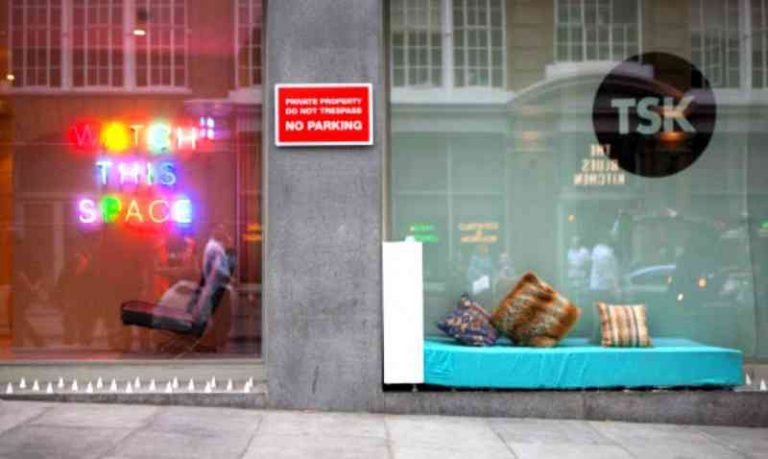
Borromeo explains why she believes the movement has gained so much attention: “[The project has] definitely touched a nerve and I think it is because, as a whole, humans will still look out for each other […] Capitalism and greed conditions us to look out for ourselves and negate the welfare of others, but ultimately, I think we’re actually really kind.”
The anti-homeless spikes are visible forms of discrimination that target homeless people, but there are other forms of anti-homeless laws that are passed without much contestation because they are naked to the eye.
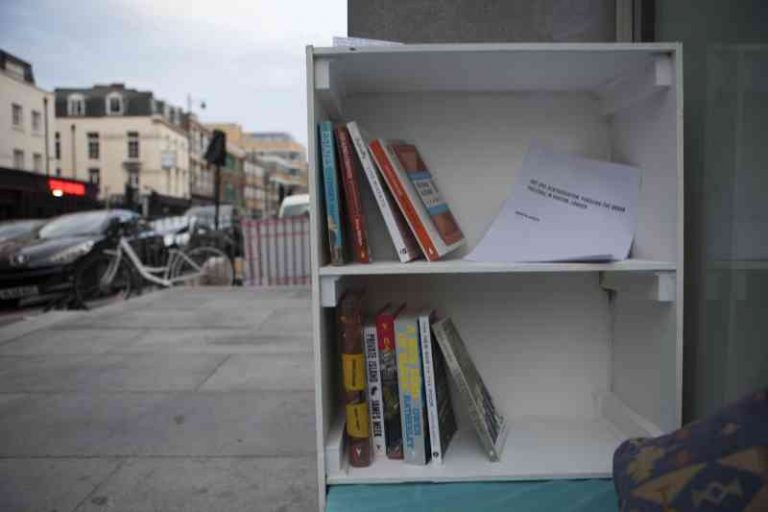
Some of these include bans on panhandling and prohibiting people from sleeping in cars. A report by the National Law Centre on Homelessness & Poverty found that in 187 American cities, there has been a 43% increase in citywide bans on sitting or laying down in specific areas since 2011.
Thankfully, there are groups who are still advocating on behalf of the homeless population and creating awareness around the issues they face. Borromeo states, “[The world] won’t always be happy-clappy because positive social change needs constructive conflict and debate.” However, she adds, “We need to call out injustice and hypocrisy when we see it.”
